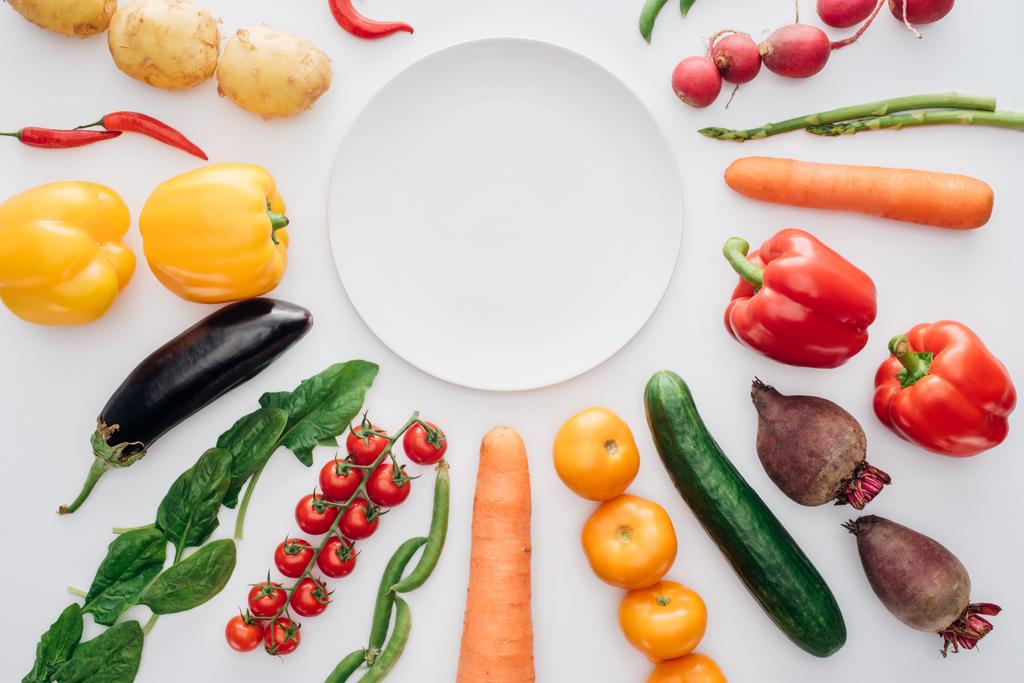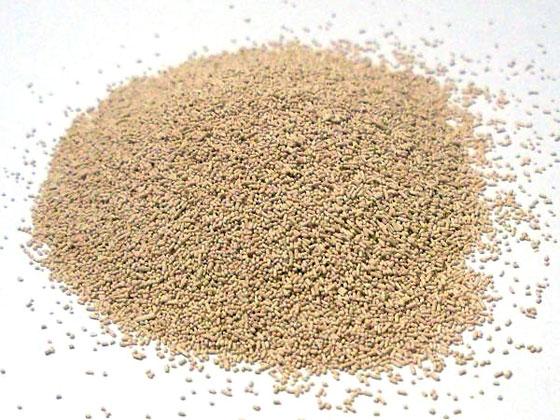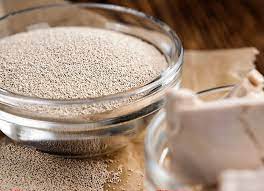Glutamate is blamed for many ailments, diseases and symptoms. Because Chinese food is often flavored with glutamate, the term “Chinese restaurant syndrome” has become common when it comes to these intolerances.
There are many half-truths and myths surrounding food additives. Utopia clarifies the most important questions.

1. What is glutamate?
It is a white powder very similar to salt. And in fact they are salts of L-glutamic acid. The most commonly used of these salts is monosodium glutamate, which appears as E621 on the ingredient list of foods.
In addition to monosodium glutamate, there is also calcium diglutamate (E 623), monopotassium glutamate (E 622), magnesium diglutamate (E 625) and monoammonium glutamate (E 624). Correctly one would have to speak of “glutamates”, since there is not just one and several can be used. Incidentally, in Japan they speak of “Ajinomoto”. That was originally just the name of a glutamate product, but today it is used as a generic name like “Tempo” or “Maggi”.
2. Is glutamate a chemical product?
Although the food additive has the reputation of being “dangerous chemicals”, glutamates and their acids are completely natural products. The human body also produces these substances and they are present in many foods, such as cheese, yeast and tomatoes. Glutamic acid, the basic substance for glutamate, is an amino acid, i.e. a completely natural “building block” of protein.
However, the production of the flavor enhancer is anything but natural and the use of genetic engineering is possible.
3. What is Chinese Restaurant Syndrome?
For about 45 years, people have been reporting complaints after visiting Chinese restaurants or enjoying Chinese food. Symptoms are described as palpitations, itchy rash, headache, itchy throat, tingling or numbness in the mouth and throat, dry mouth, nausea, neck and limb stiffness, and more.
In several scientific studies, however, no connection between the intake of glutamate and the symptoms described has been observed. In many cases, the researchers were even able to demonstrate the “nocebo effect”. People who thought they were sensitive to glutamate also showed the symptoms when they only thought they were eating foods fortified with the additive. It is believed that the symptoms stem from other ingredients in the food, such as shrimp, peanuts or fish sauces.
4. Is glutamate banned?
The World Health Organization (WHO) considers the consumption of normal amounts of glutamate to be harmless. This also applies to the German Society for Nutrition DGE, the Federal Office for Risk Assessment BfR, the health authorities of the USA, the EU Scientific Committee for Food SCF and other organizers. Therefore, a maximum daily dose has not even been set. Nevertheless, the flavor enhancer has been viewed critically for a long time and the European Food Safety Authority wants to re-evaluate the additive by the end of 2016. The consumer centers advise against frequent consumption.
In Germany, glutamate must be declared on the food and is forbidden in baby food and organic food. There are regulations as to how much of it can be added to a food. However, these values are far apart: seasonings such as fondor may contain up to 50 percent of the spice enhancer, canned meat only 1 percent.
5. Does glutamate cause bloating and diarrhea?
Even with the symptoms of “Chinese Restaurant Syndrome”, neither flatulence nor diarrhea are among the symptoms reported by those affected. Anyone who observes such digestive problems after consuming food that has been seasoned with flavor enhancers must look elsewhere for the culprit. It’s definitely not the glutamate.
6. Does glutamate cause obesity and high blood pressure?
The food additive is held responsible for many things, and so it is not surprising that obesity and high blood pressure are said to be the result. However, so far no study has really been able to prove that the additive alone is responsible for obesity and the resulting high blood pressure.
It is true, however, that overweight people usually cover a high proportion of their nutritional needs with industrial foods, ready meals, seasonings and other foods containing glutamate. The cause of obesity is usually due to the choice and amount of food, not the additive itself.
7. Does glutamate stimulate the appetite?
Foods that contain glutamate appeal to our fifth sense of taste, called umami. The term comes from Japanese and can be translated as “tasty”. Umami is a hearty, full-bodied, spicy taste that some people can’t really keep their hands off.
Just like there are “sweet junkies”, the flavor of umami also appeals to some people. Anyone who counts themselves among them likes to eat foods containing glutamate more often than necessary. And this regardless of whether the substance was added to the food or is already contained naturally.
8. Does glutamate cause heart palpitations or cardiac arrhythmias?
People who are affected by “Chinese Restaurant Syndrome” sometimes report heart palpitations or cardiac arrhythmias. In the syndrome described, however, it has not been scientifically proven that the symptoms are due to glutamates. It is therefore assumed that such heart problems are related to other causes, allergens or accompanying circumstances.
9. What does glutamate have to do with gluten?
Quite simply: nothing! It can be assumed that identical initial letters lead to the wrong assumption that gluten-free foods are also free of glutamate.
Gluten is a sticky protein that is found in many grains such as wheat and spelled and is easily tolerated by healthy people. Only people who suffer from gluten intolerance (celiac disease) have to do without gluten, but like all healthy people they can also consume glutamate.
10. Does glutamate give you a skin rash?
When talking about allergies and intolerances, many people quickly think of an itchy rash. So it is not surprising that glutamate should also be responsible for this. In fact, skin rash is also mentioned as a symptom of Chinese restaurant syndrome. However, like other symptoms and side effects, it cannot be attributed to the flavor enhancer according to current scientific studies. It’s usually an allergy or reaction to another ingredient.
11. Does glutamate cause headaches and migraines?
Migraine sufferers are often advised to avoid glutamate to ensure that such foods do not trigger a migraine attack. The triggers for migraines are diverse and have not yet been fully researched. Every patient knows different triggers for migraines and so it is not surprising that the food additive is also suspect. If this is the case, the same reaction should also occur after consuming foods naturally high in glutamine. In most cases, however, it is not the additive itself that is responsible for the migraine, but the time and type of consumption of the food seasoned with it.
12. Does glutamate lead to Parkinson’s and Alzheimer’s?
It was found that disturbances in the body’s glutamate metabolism can promote the development of Parkinson’s, Alzheimer’s and other degenerative diseases. However, it is about the glutamate metabolism, which is completely independent of the additive supplied from the outside. Eating foods containing glutamate has only a very small effect on this.
13. Does glutamate promote cancer?
Experiments have shown that an increased level of glutamate in the blood serum can promote the development of prostate cancer. It has not yet been clarified how much of the substance has to be ingested through the diet. It is also not clear whether exogenous factors such as food can cause critically high blood serum levels in the long term.
It is likely that such harmful levels are caused by a disruption in glutamate metabolism itself and not by diet.
14. Is glutamate the same as yeast extract?
The flavor enhancer glutamate is often equated with yeast extract. It is true that yeast extract contains the amino acid monosodium glutamate along with many other amino acids. However, yeast extract naturally contains the substance, as do Parmesan or soy sauce.
Yeast extract also tastes spicy, i.e. “umami” and is a popular condiment, especially in organic foods. While yeast extract is not classified as an additive, it is added to affect flavor. At this point, one may well feel deceived by the reference “without flavor enhancer”.










